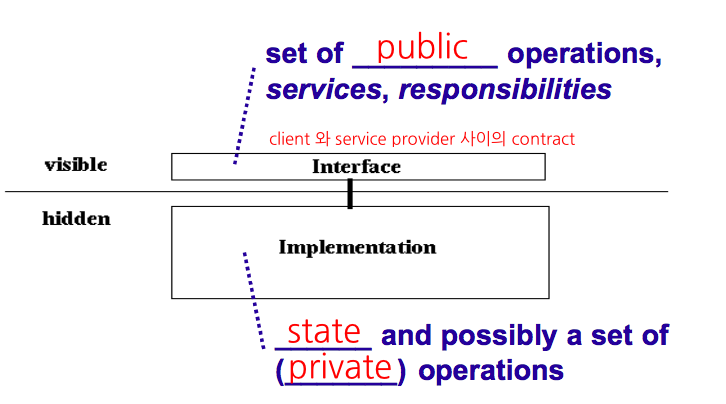Object-Oriented Paradigm builds on three import concepts
- Objcets
- Classes
- Inheritance
- (Additional) Polymorphism
Objects have attributes that help describe them
Objects have externally observable behaviors
aka Services - 사용자관점 or Responsibilites - 객체관점(Interface, Type)
Encapsulating state of object rather than expose it is good engineering
Encapsulation : separatino of inerface from implementation

-> don’t need to know how object will perform actions,
But need to know what messages it will understand
Objects have Unique Identities
Identity is property of object distinguishes itself from all other objects
-> Don’t confuse between the name (or handle) of object and object itself
Objects communicate by sending Messages (Request for action)
Objects perform actions by making requests of each other through messages
there is a designated Receiver (or target) that accepts the messages
the actual behavior performed by the receiver may be different,
depending upon the Type of the Receiver => Polymorphrism
(상속관계에 있는 polymorphrism 은 pure polymorphrism -> 대부분의 polymorphrism)
(Method overloading -> Ad hoc polymorphrism)
Ask not what you can do to objects, but Ask what objects can do for you
Class is a group of ojbects with similar attributes and behavior
Class is a Repository for behavior and
the internal representation of the associated objects
————
Objects are created from classes through the process of Instantiation(실체화)
Objects are actual Instances of a class
Classes are factories and objects are products from the factory
-> the terms instance and object are interchangeable